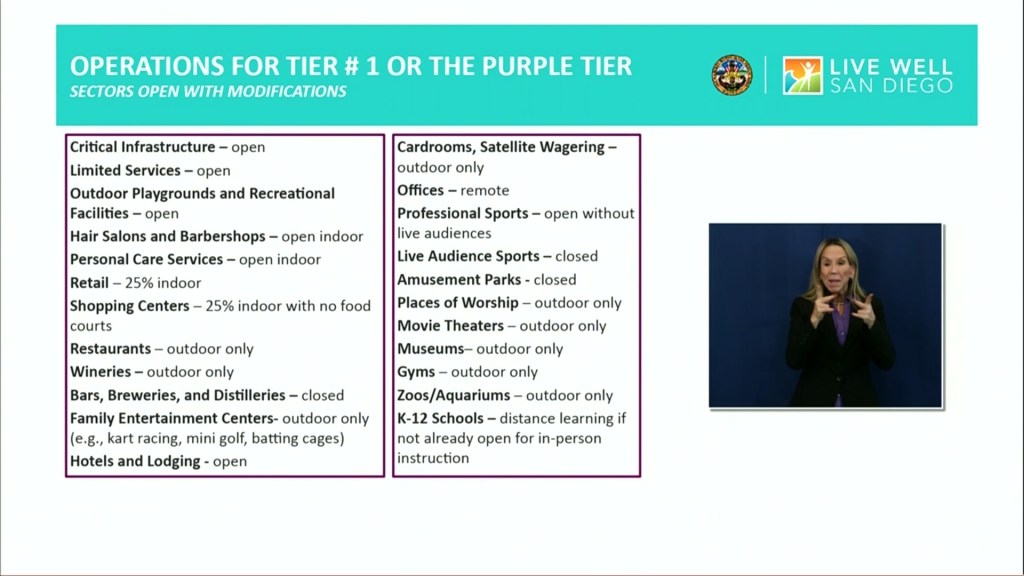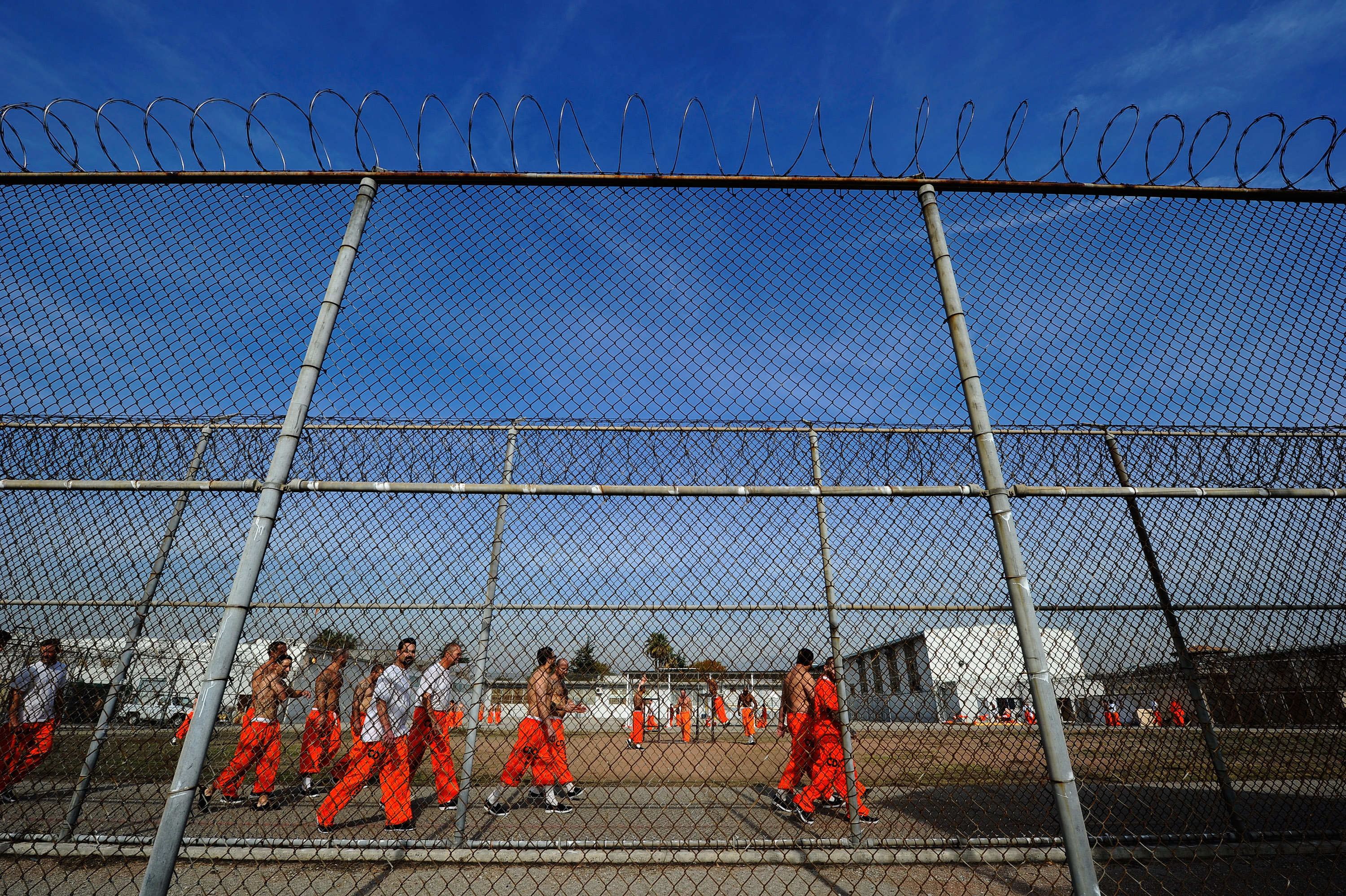Purple tier restrictions started Saturday in San Diego County.
The state allowed businesses a three-day grace period before they had to comply with purple-tier rules. The changes went into effect at 12 a.m. Saturday.
On Tuesday, San Diego County was shifted to the most-restrictive tier in California's color-coded system of coronavirus-related tiers.
The possibility had been looming since the California Department of Public Health reported in late October that San Diego County’s COVID-19 case rate rose to 7.4, which is above the 4.0 to 7.0 case rate required for the Red Tier. If any county is above the 7.0 threshold for two consecutive weeks, it will be moved into the most-restrictive tier, which became San Diego County's reality on Tuesday.
NBC 7 spoke to business owners as they started the day with the new restrictions.
At Applebee's, the manager told NBC 7 off-camera she was aware the restrictions began today and all of the customers were dining outside.
But steps away at Texas Roadhouse, the manager told NBC 7 he thought the new restrictions started tonight and off-camera said he was working to make sure they were compliant.
California
News from across California
"It's hard for these people to be out of work for quite a long time especially in these malls and things like that. They're all going to go out of business and it's sad," said Jeff Mattazaro, an East County resident.
Tier 1 means there is "widespread" risk of contracting COVID-19, according to California Public Health officials. Many nonessential businesses will be required to move to outdoor-only operations. These include restaurants, family entertainment centers, wineries, places of worship, movie theaters, museums, gyms, zoos, aquariums and cardrooms.
The restrictions include closing amusement parks. Bars, breweries and distilleries will be able to remain open as long as they are able to operate outside and with food on the same ticket as alcohol.

These are changes one woman said she was relieved to see given the growing number of cases.
"I am glad that we are (have restrictions) so that it won't get so bad like Wisconsin and the Dakotas," Gayle Hernandez, an East County Resident said.
On Thursday, San Diego County released new data that shows coronavirus case rates in individual cities and ZIP codes, painting a more detailed picture of which communities are being hit the hardest.



